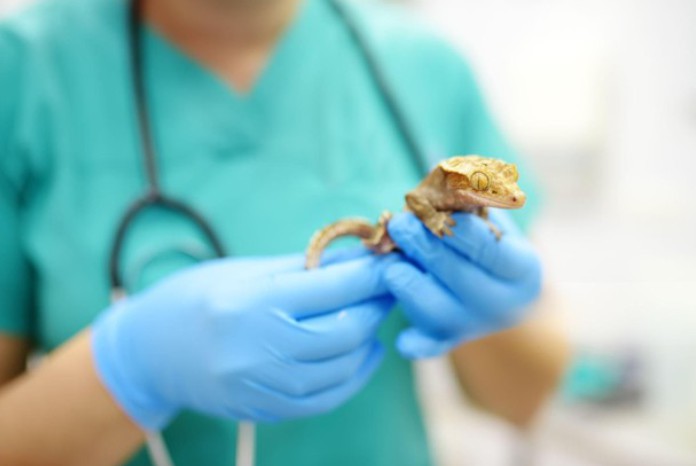When an African Grey parrot begins seizing from heavy metal toxicity or an axolotl starts floating uncontrollably in its tank, few veterinary professionals have the training—or the tools—to respond. These moments, rare but increasingly common in clinics that treat nontraditional pets, are reshaping emergency veterinary care in the U.S.
In pet-forward regions like South Florida, where exotic ownership is booming, the need for specialists who can act with both speed and species-specific expertise has never been greater. At the forefront is Dr. Bairon Madrigal, Lead Associate Veterinarian at Broward Avian & Exotic Animal Hospital, one of the busiest exotic animal ERs in the region. With a caseload spanning cockatoos to prairie dogs to bearded dragons, Dr. Madrigal’s work reveals a world where survival hinges on nuanced knowledge and rapid, precise action.
What Is Exotic Animal Emergency Medicine—and Why Does It Matter?
Exotic animal emergency medicine is a specialized branch of veterinary care dedicated to nontraditional pets: birds, reptiles, amphibians, small mammals, and even zoo species. Unlike dogs and cats, these animals often present with subtle or atypical signs of illness, and their physiology varies dramatically, even within the same species group, making diagnosis and treatment highly individualized.
The stakes are high. The American Pet Products Association reports that more than 20 million U.S. households now own birds, reptiles, or small mammals. Yet, very few veterinary clinics are equipped to handle, diagnose, and treat them properly.
“With exotics, the margin for error is incredibly slim,” explains Dr. Madrigal. “Something that seems minor—like reduced appetite or lethargy—can signal a critical emergency.” Because many exotic species are prey animals by nature, they instinctively mask signs of illness to avoid appearing vulnerable. By the time symptoms become noticeable to an owner, the animal is often already in a dangerous or advanced stage of disease.
Advancing the Field Through Leadership and Outreach
A South Florida native, Dr. Madrigal grew up surrounded by exotic pets and pursued degrees in marine biology, infectious disease, and veterinary medicine—culminating in a doctorate degree and certificate in Exotics and Zoological Medicine from Kansas State University.
Today, he leads one of the nation’s few high-volume exotic ER clinics, managing urgent cases ranging from avian fractures to life-threatening GI stasis in rabbits. But what sets his work apart is the dual emphasis on proactive preventative care and compassionate client education—both grounded in a readiness to respond when emergencies arise.
“Most emergencies could be avoided with proper husbandry and early intervention,” he says. “That’s why I take the time in each exam room to thoroughly discuss each pet’s species-specific care needs. When owners understand what’s normal and what’s not, they’re far more likely to catch subtle changes early and bring their pet in before things become critical.” He’s also investing in broader outreach—through community Q&As, digital content, and social media—to raise awareness and help exotic pet owners feel more confident and informed.
Why Exotic Emergencies Require a Different Playbook
Treating an axolotl, for example, requires an understanding of their cold-water physiology and highly specialized tank conditions. Unlike tropical fish, axolotls thrive in water temperatures between 60 to 64 degrees Fahrenheit. Prolonged exposure to warmer tank conditions can lead to stress, infection, or fatal organ failure, making temperature regulation essential in both at-home and clinical settings.
In birds, something as seemingly minor as a broken blood feather can become life-threatening if not addressed quickly due to rapid blood loss. In African Grey parrots, this risk is compounded by underlying health conditions such as fatty liver disease or cardiac disease, both of which can interfere with normal blood clotting and are commonly seen in the species.
Dr. Madrigal recalls a recent case involving a capybara that collapsed during a severe South Florida heat wave. The patient required rapid stabilization using temperature-controlled IV fluids, careful positioning to prevent aspiration, and constant 24-hour monitoring. Once stabilized, the treatment plan included a gradual reintroduction of food tailored to the species’ unique hindgut fermentation and water needs, along with environmental modifications to prevent future episodes of heat stress.
These kinds of emergencies demand more than general medical knowledge—they require a deep, species-specific understanding and a clinical environment equipped to respond without hesitation.
“The public assumes all veterinarians are trained equally across species, but the truth is, exotic medicine is its own language and less than 10% of clinical veterinarians are even willing to see exotic pet species,” he notes.
Sustainability in Specialized Care
The short answer: it must be. As exotic pet ownership continues to rise, so does the need for veterinarians trained to provide skilled, species-specific care. Yet many clinics avoid treating exotic pet patients altogether due to the steep learning curve. Managing these cases demands an exceptional breadth of knowledge, constant adaptability across diverse species, and the ability to make critical decisions with limited research or precedent. This level of complexity often leads to high rates of burnout—or deters veterinarians from entering the field at all.
Dr. Madrigal sees mentorship as the path forward. He actively trains new veterinarians and veterinary students at his hospital, focusing on emergency preparedness, client education that empowers preventative care, and developing a deep understanding and respect for each species’ unique medical and behavioral needs. “We need to build a pipeline of vets who feel confident—not afraid—whether it’s a parrot or a ferret coming through the door.”
The Bigger Picture
As the definition of “family pet” continues to evolve, so too must the systems built to protect them. Exotic animals are still too often undervalued—both by the public and even within the veterinary profession—compared to more traditional pets like dogs and cats. But this couldn’t be farther from the truth. Many exotic pet owners share the same deep, lifelong bonds with their animals as any dog or cat owner does. In some cases, that bond is even deeper.
Dr. Madrigal has treated a 50-year-old sulcata tortoise that a client received at age ten—a companion that has been with them through school, college, and nearly their entire life. Another client brought in a 60-year-old Amazon parrot that originally belonged to their parents and is now lovingly cared for in their memory. These animals are not just pets—they are family.
Dr. Bairon A. Madrigal represents a new wave of veterinary professionals—not only clinically proficient, but deeply attuned to the emotional, cultural, and ethical dimensions of exotic pet care.
Whether treating an African Grey parrot in crisis or educating a first-time axolotl owner, his work highlights an urgent truth: without the right expertise, infrastructure, and client education, exotic animal emergencies too often end in tragedy. But with the right investment in mentorship and public understanding, the field is poised for meaningful, lasting transformation.





